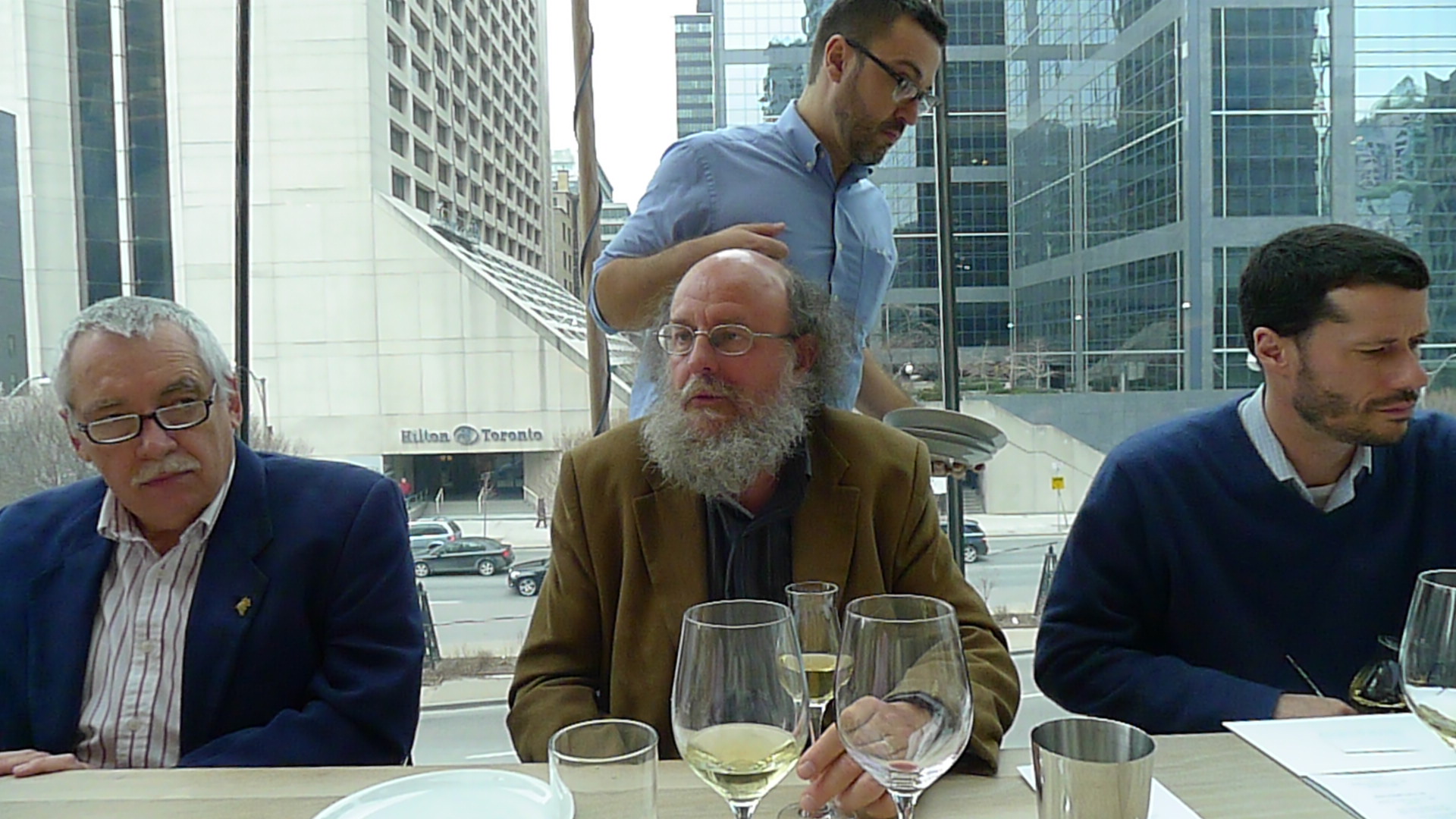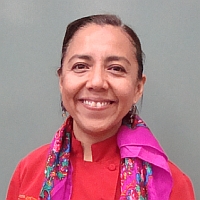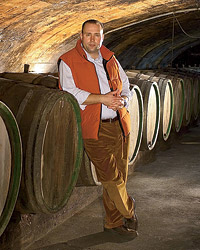by Anthony Wing
Fall 2011
A flashlight shakily moving across a jagged beam at a moonless 3 am somewhere in Grey County. First to the post and seven years affixed, oyster shells bodied past, upholding vertically their estuarial stasis long after meeting (with luck) a quick and mind-blowing end on crushed-ice caskets. Desiccation from elemental pounding was clear from the beam-on-beam contact: seagreens, greys and whelmed beiges had effectively vanished, leaving an antique china white reflecting half-told stories and myths lost between sea and land. But the bivalve peacock shade had yet to fade completely: a bizarre beautiful purple swoosh wormed through thousands of calcified shapes of memory; time’s adornment was at least a calling card for rituals of retrieval.
I was standing, nay swaying, with Oyster Boy in the massive courtyard-like quad midway through the 100-acre georgic sprawl of Eigensinn Farm. A longtime Stadtlander confrere and wilderness wellspring, OB visits so often that a remote cabin on the property has long been effectively oyster-annexed, but I had not travelled the 2-plus hours from Toronto to traverse the secondary roads, paths and scrub since summer 2003. From June to August of that year we were engaged in the business of creating a station where oysters could be shucked and consumed during Stadtlander’s ambitious and imaginative events in the quad. But on this evening seven years on there was multifold business of which to get shot: the loading of a cooler of fresh eel into the oyster van for delivery to Haisai, Michael and Nobuyo Stadtlander’s 28-seat Singhampton restaurant and bakery; additional loading into said van of thousands of spent oyster shells gathered from the Oyster Boy mothership (for use in an unrelated current Eigensinn oyster project); a stop at an Orangeville LCBO for enough Guinness to choke an heir; live-product oyster wholesale drops along the way, and finally, a mission to inspect the Eigensinn oyster station for telltale signs of atrophy requiring upgrade surgery.
We did get eventually to the latter task, which was the proximate reason for my visit but found better off executed in the cold light of day, especially after a night of not insufficiently methodical detours. On arrival at Haisai we encountered the late stages of a wedding reception for a well-known Canadian actor/director, so we hung about in the simply designed and beautifully tricked out kitchen whose front section was centred by one of the largest wooden prep tables I had ever seen (this is my recollection, although given Guinness’ gradually prominent role in the visit, it’s possible the table never existed).
Soon after our arrival Stadtlander emerged from the back of the restaurant, moving quickly past the schoolbus driver on hand to ferry the bleary sated wedding party back to their B&Bs, his redoubtable frame unbowed by foodwork of decades. He walked resolutely to the oyster van, and as I swung open the back doors to remove the eel cooler, he shook his head and laughed. The overpowering waft of freshly spent oyster shells bound for Eigensinn must have been enough to stop a battleship, although I’d got used to it years before we reached the highway that day. “You drove with that?” A moment later it occurred to me that it was perhaps the bazillionth time he had met a shell-filled oyster van, going back even before spring 2003 when I first turned up to help build the station in the quad. Still he was captivated by it, a shared fascination.
Notes Prior
Effusive praise (slug-trailed by random intervals of peculiar scorn) is year after year lavished on Michael of Singhampton and his evolving culinary hejira: much is made of a chance meeting with Jamie Kennedy in Switzerland and acceptance of an invitation to emigrate for the purpose of opening together the Scaramouche kitchen; less known is his quiet entry, on arrival, into the George Brown culinary program for orderly and diligent study of food industry mores in his newly adopted country. And so when I first accompanied OB to Eigensinn to help begin the oyster station project, I met not the mystique but a measure of it: an unconstrained work ethic annealed by military service back home and conditioned by a determination to bring suggestion to life without hesitation. Upon me this was Stadtlander’s first and enduring cast of innovation (along with a mischievous streak at the plate about which more later).
His ineluctable delectable assault on the 1980s Toronto restaurant scene (along the way featuring the then-wildly ambitious “bioregional” menu at Nekah, from which survives James Chatto’s elegiac food writing and an indissoluble influence on Canadian cuisine) was per contra shadowed by a growing disenchantment with urban distension, culminating in the 1993 exodus and decampment to Eigensinn. At this writing it seems a natural progression; at the time it could be viewed as something of a bizarre and even self-destructive act. Yet read today, RW Apple’s 1997 New York Times review is replete with the unavoidable hyperbole of a powerful experience (“I had thought that flavor gone forever”) and remains a vindication of sorts as Eigensinn began to reach the ends of the Slow Food earth.
There followed Stadtlander’s emergence as a suggestive superpower on the Eigensinn canvas, as improbable event ideas turned into landmark happenings while along the way Eigensinn became a one-stop idea expo towards the goal of a Great Transformation for the Canadian food industry. By 2008 his ideas and goals had coalesced into the formation of the Canadian Chefs’ Congress.
But of course this was all happening in Canada, so a critical backlash was always round the corner from which (outside of the well-known 1997 sting operation involving two sinister bottles of wine) could always be derived vintage laughs: one example of accidentally comedic scorn appeared during the 2-year period when the UK’s Restaurant Magazine was assigning Eigensinn a place on its list of the Top 50 world restaurants (reaching #9 in 2002). Globe columnist Margaret Wente, whose comfort-the-comfortable style is routinely applied without discrimination to all issues, dismissed the locavore shift in Canadian cuisine as little more than an excuse to inflate prices (in fact RW Apple’s review had concluded with a note of astonishment at the low bill for the dinner) and, while strangely never mentioning Stadtlander by name, ridiculed his apprentices for willingly discharging the hero-worshipping task of shoveling “chicken poop” as part of their duties. Remembering my six weeks at Eigensinn working on the oyster project a year before the appearance of the Globe column, I recalled its location on farm property upon which livestock are raised, property subject to such duties as necessary to keep the operation running. In the end the only thesis I could detect from the attack was the columnist’s plaint that high-end restaurant patrons could no longer smoke cigars indoors as in the bygone days of steak ‘n’ beers as fine dining. And in the event, such halfhearted pop-gun warning shots made the simple and effective messages of locavore culture seem even more simple and effective.
Christmas 2002
Stadtlander and the Oyster Boy had originally met at a 1990s Feast of Fields event, whereupon mutual passions for raw product converged into a productive and inventive association, each pushing the other towards the realization of crazy wonderful event ideas in the intervening years. OB eventually helped start the Chefs’ Congress. But back in 2002, when he was already a frequent Eigensinn guest as impromptu structures began to rise on the property (leading eventually to the 2005 Heaven on Earth sculpture/book project), OB wandered away from the Christmas celebration fray and walked to the quad, an intimidating distance in deep snow. According to his account, he stood on the site of our future 3 am sway and conceived the idea of a permanent oyster station. He made it back to the house and, as his clothing was put through the dryer, his boots warming near the fireplace, related his idea to the Stadtlanders.
Four months on in Calgary, as I completed a term developing the oyster program at Catch restaurant, OB was on the telephone. “We’ll need help doing this.” I got on a plane, and we got on the highway to Grey County.
Next — Seasons II: Oyster Calibans and the Temple of Love
 Anthony Wing is a writer, oyster celebrant, pianist, composer-arranger and Shakespearean anti-fascist. He can often be found, in the company of oysters, on the back patio at Union, 72 Ossington Avenue, Toronto, Ontario, Canada.
Anthony Wing is a writer, oyster celebrant, pianist, composer-arranger and Shakespearean anti-fascist. He can often be found, in the company of oysters, on the back patio at Union, 72 Ossington Avenue, Toronto, Ontario, Canada.









Really nice, Anthony!
Just keeps getting better Anthony! Dont stop!
Anticipating bodily flow in the downtime of natural opportunity I almost came struck with the beauty of description. Your words melting as fresh acrylic Then it happened. I was releaved .
Dude,Hijira? really? Islam and oysters. It Works! When are you going to get something like this going in my dismal Protestant backwater?